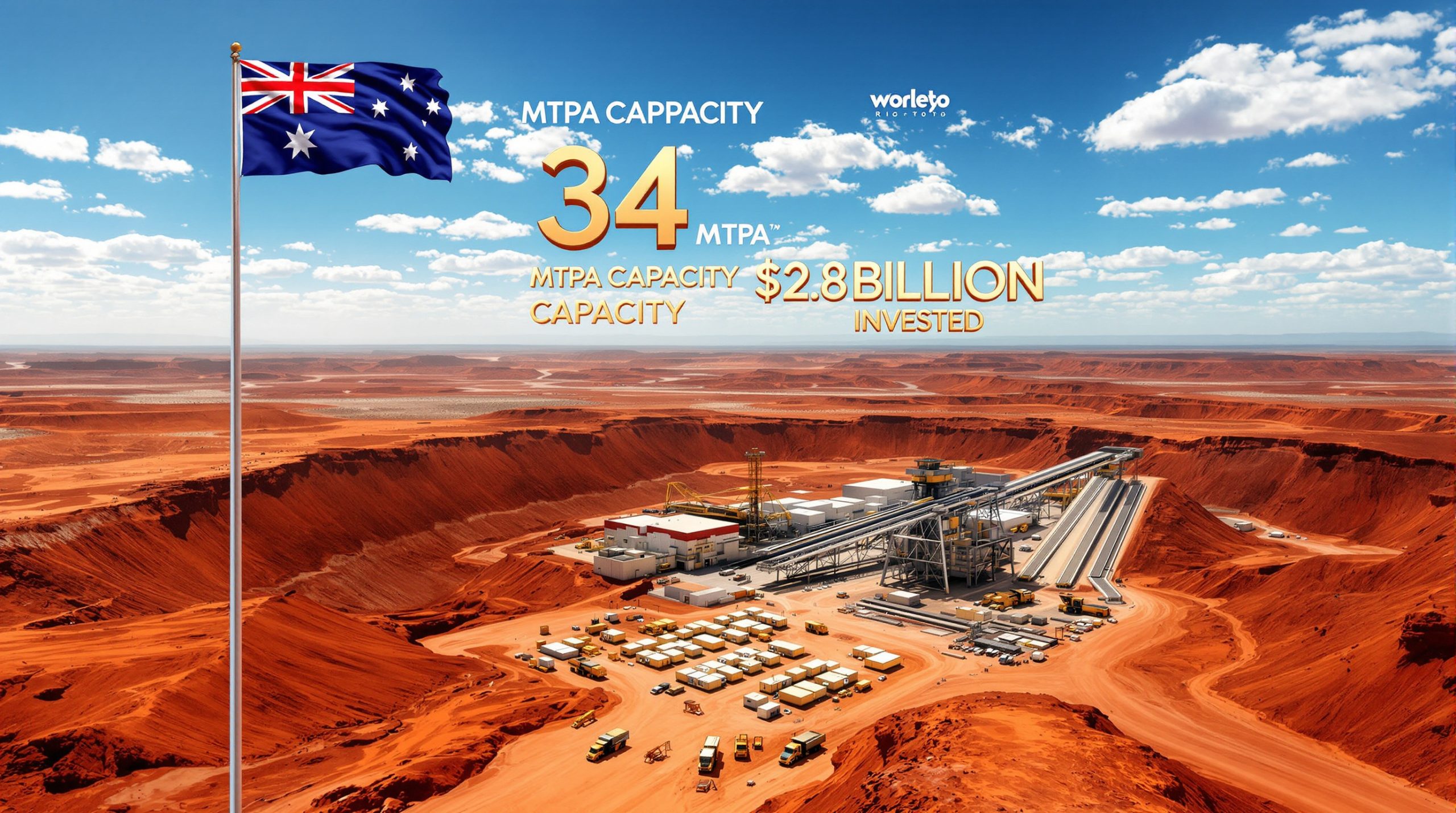Why Are Junior Mining Companies Not Performing Despite High Metal Prices?
Despite gold reaching over $3,000 per ounce and positive momentum in silver and copper markets, junior mining companies haven't experienced corresponding share price increases. This disconnect between soaring bull market in metals prices and lagging junior valuations has left many investors puzzled and frustrated.
The primary reason for this performance gap stems from investment capital flowing to producers first. Major mining companies with operating mines attract immediate attention because they offer visible free cash flow leverage from rising metal prices. The Global X Gold Miners ETF (GDX) has outperformed the Junior Miners ETF (GDXJ) by over 35% during the initial stages of this gold rally.
"There's still a lot of people who are underwater in the juniors from the last cycle we had in 2019-2020," explains mining analyst David. "A lot of investors got badly hurt in the downturn that happened afterwards, creating a hangover of distrust that lingers in the junior space."
Market saturation presents another significant challenge. With over 2,000 exploration stocks globally competing for attention, investors suffer from "analysis paralysis" due to excessive choice. Industry data shows less than 15% of these juniors have sufficient working capital (over $5 million) to fund 12-18 months of operations without dilution.
The junior sector also suffers from investor participation rates that remain 40-50% below 2020-2021 peaks despite commodity price strength. This diminished investor base creates a capital vacuum that prevents many juniors from gaining traction even in favorable metal markets.
Many exploration companies lack clear paths to production or defined catalysts that would justify investment. Without specific, time-bound milestones, investors have little incentive to allocate capital to these speculative ventures when producers offer more immediate returns.
How Does Capital Flow Through the Mining Sector During a Bull Market?
The mining investment cycle follows a predictable pattern that creates opportunities for investors who understand the sequence of capital deployment:
-
Smart money enters large producers first (currently happening) – Major mining companies with multiple operations and strong balance sheets typically gain 25-35% in the first 6 months of a bull market.
-
Mid-tier producers gain attention next – These single or dual-mine operators often see 40-50% appreciation after majors have moved.
-
Developers with near-term production potential follow – Companies with defined resources and clear paths to production begin attracting capital 6-12 months into the cycle, often delivering 50-70% returns as they de-risk.
-
Quality explorers with clear catalysts begin moving – Companies with high-grade discoveries and consistent drill results start gaining traction 12-24 months into the cycle.
-
Eventually, broader market participation lifts even lower-quality juniors – In the final stages of a bull market, speculative fever can drive extraordinary returns across the sector.
"We've had four different names within our portfolio that have seen their share price basically go vertical in the matter of the past two to three weeks," notes Matt, suggesting the beginning of this trickle-down effect from producers to select developers.
Recent acquisition activity provides further evidence of this progression. Companies like First Majestic are conducting deals priced at 1.8-2.2x NPV (Net Present Value), significantly higher than explorer valuations at 0.3-0.5x potential value, indicating appetite for near-term production assets.
Industry analysts point to a key technical development: "For the first time, gold stocks have been breaking out on a chart pattern against the S&P 500," Claude observes. "Now gold stocks are doing better than the general market. This should wake up generalist investors who had abandoned the sector."
Regulatory improvements in key jurisdictions are also accelerating capital flow. For example, Mexico's permitting reforms have reduced approval timelines from 24 to 8 months, creating a more favourable environment for project development and attracting investment dollars.
What Characteristics Make Junior Mining Companies Attractive Investments?
Successful junior mining investments share several critical attributes that separate winners from the thousands of underperformers:
Grade and Deposit Quality
High-grade deposits command premium valuations, with thresholds varying by mining method:
- Open pit operations typically need >4g/t gold equivalent
- Underground projects require >8g/t to generate robust economics
"Underground projects with 10g/t sustain healthy margins even at $1,600 gold," explains Tom. "The asset has to come first… that's quality rocks. You can have the best management team in the world, but if they're working with mediocre geology, the economics simply won't support a viable mine."
Sufficient Working Capital
Cash runway directly impacts valuation:
- Minimum $5 million for 12-18 months of operations without dilution
- Companies with less than 6 months of cash typically trade at a 30% discount
- Drilling programs cost £300-500 per metre, requiring substantial treasury for meaningful campaigns
"How much cash you have in the bank is a key determinant of investor confidence," Matt emphasises. "Markets reward companies that can advance projects without constant dilutive financings."
Clear Catalysts
Defined milestones that move projects forward create investment momentum:
- Drill results should be spaced no more than 90-120 days apart
- Resource updates, economic studies, and permitting milestones provide valuation inflection points
- Exploration programs without specific targets and timelines fail to capture market attention
"One very important ingredient for junior company success is to have clearly defined catalysts in the calendar," Matt advises. "Companies with drill results spaced more than six months apart lose investor attention and momentum."
Path to Production
Companies with realistic plans to build mines outperform perpetual explorers:
- Demonstrated metallurgical recovery (>85% for gold, >90% for copper)
- Capital intensity below $100,000 per annual ounce of production
- Clear permitting pathway in mining-friendly jurisdictions
"Plan A has to be to work towards building a mine," David insists. "Too many juniors are content to drill perpetually without advancing toward production."
High Margins
Projects with robust economics across metal price cycles attract premium valuations:
- All-in sustaining costs (AISC) at least 25% below prevailing metal prices
- High-grade underground operations typically achieve 65% AISC margins versus 35% for bulk tonnage deposits
- Sensitivity analysis showing viability at 30% lower metal prices
"Senior gold stocks have the best margins… better than technology, healthcare, or consumer goods," Claude points out. "This fundamental strength is finally being recognised by the broader market."
How Should Investors Approach the Junior Mining Sector?
Investors can employ two primary strategies when building a junior mining portfolio, each with distinct characteristics and success rates:
Top-Down Approach
This strategy starts with macro trends and metal price forecasts, then selects companies positioned to benefit:
- Focus on commodity price momentum and sector rotation
- Typically results in portfolios of 8-12 companies concentrated in hot sectors
- Historical success rate around 22% over five-year periods
- Works best for investors with limited sector-specific knowledge
"Metals move in cycles, and you want exposure to the ones showing upward momentum," explains Claude. "Right now, that's gold, silver gaining traction, and uranium consolidating before its next move."
Bottom-Up Approach
This method evaluates individual projects regardless of current market conditions:
- Prioritises asset quality, management competence, and capital structure
- Results in more diversified portfolios of 15-25 companies
- Historical success rate of approximately 37% over five-year periods
- Requires deeper technical understanding but historically delivers superior returns
"I'm a bottom-up guy through and through," Matt states. "People are at the very top of the list of factors to consider, followed by project quality and capital structure."
Most experts favour a hybrid approach that combines elements of both strategies:
- Start with favorable commodity trends but insist on project quality
- Pay attention to jurisdiction risk, which accounts for 30-40% of project uncertainty
- Evaluate management teams based on track record, technical capability, and skin-in-the-game
"Grade remains king, jurisdiction is important… along with management, those are the three keys that you want to look at," advises Peter. This balanced approach provides exposure to market momentum while maintaining quality standards.
What Types of Junior Companies Will Likely Perform Best Next?
As capital continues flowing through the mining sector, experts identify several categories of junior companies positioned to outperform:
Near-Term Developers
Companies 2-4 years from production with permitted projects show the strongest risk-adjusted potential:
- Defined resources with completed preliminary economic assessments (PEAs)
- Internal rates of return (IRRs) exceeding 20% at conservative metal prices
- Clear permitting timelines in stable jurisdictions
These companies offer the perfect balance of risk and reward. They've mitigated exploration risk by defining resources but still offer significant upside as they advance toward production. Recent examples like Bravo Mining have delivered 120% returns following permitting milestones in Brazil.
High-Grade Projects
Companies with exceptional grade profiles command premium valuations:
- Underground deposits with grades exceeding 8g/t gold equivalent
- Lower capital requirements (typically $80-150 million vs. $500+ million for open-pit)
- Quicker pathway to production and faster payback periods
"Grade insulates you against rising costs and provides resilience during commodity price downturns," explains Tom. High-grade projects can maintain 65% AISC margins even when metal prices retreat, providing valuable downside protection.
Companies with Drilling Momentum
Late-stage explorers consistently exceeding market expectations attract premium valuations:
- Consistent expansion of mineralised envelopes
- Step-out drilling revealing district-scale potential
- Metallurgical results confirming high recoveries (>90%)
Snowline Gold represents a prime example, achieving a remarkable $1.6 billion market cap through consistent high-grade drill results (2.1g/t gold over 650 metres) in the Yukon. Similar success stories include ATEX Resources and Collective Mining, which have delivered exceptional shareholder returns despite the broader junior market lag.
Consolidation Candidates
Smaller producers that could merge to create more efficient operations present special situations:
- Complementary assets within proximal districts
- Opportunities for processing synergies and G&A reductions
- Single-asset companies seeking to diversify operational risk
"We're entering the consolidation phase of this cycle," notes David. "Companies combining operations can create significant shareholder value through synergies and achieving critical mass that attracts institutional investment."
What Will Trigger a Broader Junior Mining Bull Market?
Several potential catalysts could ignite widespread interest in junior mining stocks beyond the current selective performance:
Sustained Metal Price Strength
While gold has already exceeded $3,000, broader participation requires:
- Silver reaching $35-40 per ounce (currently around $28)
- Copper maintaining $4.50+ per pound
- Broader recognition of structural supply deficits in critical minerals
"Gold breaking records almost daily has just begun to catch mainstream attention," Claude notes. "When silver makes its move, that typically brings in a wave of retail investors who had been sitting on the sidelines."
Accelerated M&A Activity
Acquisition premiums drive sector-wide revaluation:
- Recent deals averaging 35-40% premiums to 30-day VWAPs
- Producers deploying strong cash flows to secure development assets
- Competition for quality projects forcing higher valuation multiples
The mining sector has already seen over $25 billion in M&A activity in 2024, but this represents just the beginning. As majors rebuild depleted project pipelines, quality juniors become strategic necessities rather than optional investments.
Improving Regulatory Environments
Policy shifts in key jurisdictions create more favourable development conditions:
- Mexico's streamlined permitting (24 months reduced to 8)
- Growing recognition of domestic mineral supply security
- Tax incentives for critical mineral development
"Jurisdictional risk is declining in several key regions as governments recognise the strategic importance of mineral development," Peter explains. This regulatory improvement reduces development timelines and costs, enhancing project economics.
Technical Breakouts of Mining Indices
Chart patterns often trigger institutional buying:
- Gold stocks outperforming the S&P 500 for the first time in years
- GDXJ/GDX ratio improvements signalling rotation into juniors
- Increased trading volumes confirming broader participation
"For the first time, gold stocks have been breaking out on a chart pattern against the S&P 500," Claude observes. "This technical signal often precedes significant capital flows from generalist investors who had abandoned the sector."
How Can Investors Minimise Risk in Junior Mining Speculation?
Junior mining investment remains inherently high-risk, but experts suggest several proven risk management strategies:
Portfolio Diversification
Spreading capital across multiple companies and project types:
- 15-25 positions for adequate diversification
- Maximum 5-8% allocation to any single explorer
- Balance across commodities, jurisdictions, and development stages
"Don't be overly anxious… we're in a bull market, we're all going to be making money," Claude advises. "Even if you have projects which have some hairs, even if you are in some dicey jurisdictions, as long as you're diversified, you're going to be fine."
Cash Position Analysis
Focus on companies with sufficient treasury to reach their next major milestone:
- Minimum 12 months of operating capital without additional financing
- Runway covering next 2-3 catalyst events
- Balance sheet strength to negotiate from position of power
"Companies with less than 6 months of cash typically trade at a 30% discount to peers," Matt notes. "The market correctly anticipates dilutive financings and prices this risk accordingly."
Strategic Entry Points
Timing purchases to minimise dilution risk:
- Wait for financing completions before buying in open market
- Monitor insider buying patterns (SEDI filings in Canada)
- Use market volatility to establish positions during sector-wide pullbacks
"The time to buy is after a financing is completed, not before," advises David. "This eliminates the risk of dilution and often provides entry at prices below what institutional investors just paid."
Technical Document Analysis
Understanding critical disclosures reveals company quality:
- NI 43-101 technical reports (resource quality, assumptions, risks)
- Management Discussion & Analysis (cash burn, project timelines)
- Management Information Circulars (insider compensation, ownership)
"Investors who take the time to read these documents gain enormous advantages," Peter explains. "The MIC in particular reveals whether management is aligned with shareholders through meaningful ownership positions."
FAQs About Junior Mining Investment
What is the difference between producers, developers, and explorers?
Producers operate mining assets generating revenue and cash flow. Examples include Barrick Gold, Newmont, and Agnico Eagle. These companies have predictable earnings that increase significantly with rising bull market in metals prices.
Developers have defined mineral resources and are advancing projects toward production through engineering studies, permitting, and financing. They typically have 2-5 year timelines to production and offer higher potential returns with correspondingly higher risk.
Explorers search for new mineral deposits or expand known ones through drilling and other exploration techniques. These represent the highest risk/reward segment, with success rates below 5% but potential returns exceeding 1,000% for significant discoveries.
Why do mining stocks typically lag behind metal price movements?
Mining equities usually trail metal price increases by 3-6 months due to:
- Investor scepticism about price sustainability
- Need for producers to demonstrate margin expansion in quarterly results
- Historical volatility and operational challenges creating cautious sentiment
- Flow of funds process that begins with ETFs before reaching individual stocks
Once price strength persists, equities typically catch up and eventually outperform the underlying metal as operational leverage becomes apparent.
What are the warning signs of a problematic junior mining company?
Red flags that often precede significant underperformance include:
- Excessive management compensation relative to exploration spending
- Multiple share consolidations (reverse splits) in company history
- Repeated promises without delivery on exploration targets
- Lack of meaningful insider ownership (less than 5%)
- Projects that have changed hands multiple times
- Constant shifting of focus between different commodities or jurisdictions
"When management owns less than 5% of the company but collects seven-figure compensation packages, their interests clearly aren't aligned with shareholders," warns David.
How important is jurisdiction in junior mining investment?
Jurisdiction significantly impacts project economics, timeline to production, and ultimate success:
- Permitting timelines range from 2-3 years in Nevada to 10+ years in California
- Tax regimes vary dramatically (30% effective tax in Ontario vs. 45%+ in parts of South America)
- Royalty structures can reduce project NPV by 15-30%
- Political stability determines long-term investment security
Safe jurisdictions may command premium valuations, while riskier areas require higher potential returns to compensate for elevated uncertainty. Recent data shows jurisdiction accounts for 30-40% of overall project risk.
What technical documents should investors review before investing?
Critical documents that reveal company quality include:
- NI 43-101 technical report: Provides independent verification of resource size, grade, and quality through [understanding the JORC code
Want to Profit from the Next Major ASX Mineral Discovery?
Don't miss out on transformative mineral discovery opportunities on the ASX. Visit Discovery Alert's discoveries page to see how their proprietary Discovery IQ model identifies high-potential announcements before the broader market, giving subscribers an immediate edge through real-time alerts and actionable insights.




